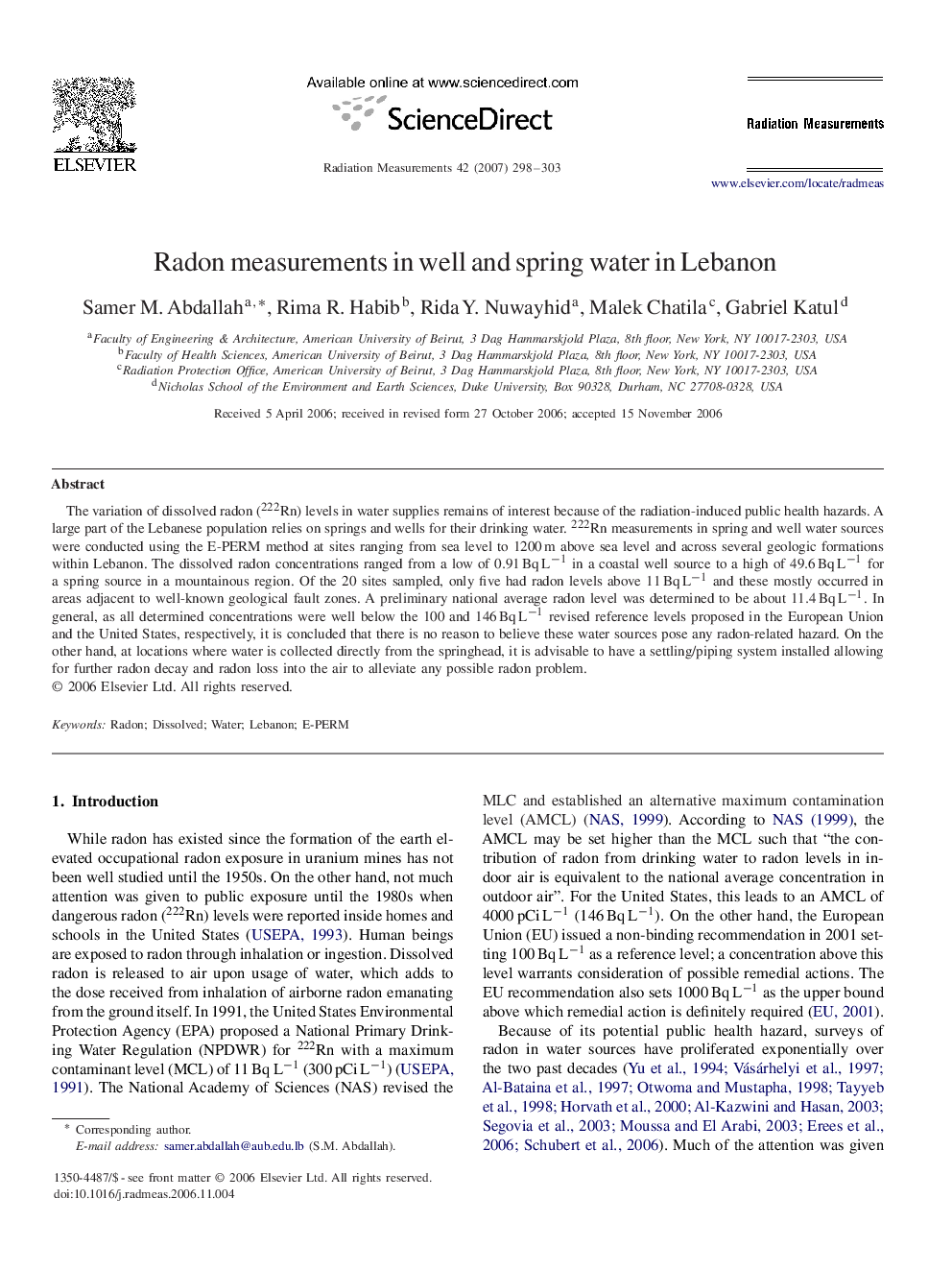| Article ID | Journal | Published Year | Pages | File Type |
|---|---|---|---|---|
| 1881311 | Radiation Measurements | 2007 | 6 Pages |
The variation of dissolved radon (222Rn) levels in water supplies remains of interest because of the radiation-induced public health hazards. A large part of the Lebanese population relies on springs and wells for their drinking water. 222Rn measurements in spring and well water sources were conducted using the E-PERM method at sites ranging from sea level to 1200 m above sea level and across several geologic formations within Lebanon. The dissolved radon concentrations ranged from a low of 0.91BqL-1 in a coastal well source to a high of 49.6BqL-1 for a spring source in a mountainous region. Of the 20 sites sampled, only five had radon levels above 11BqL-1 and these mostly occurred in areas adjacent to well-known geological fault zones. A preliminary national average radon level was determined to be about 11.4BqL-1. In general, as all determined concentrations were well below the 100 and 146BqL-1 revised reference levels proposed in the European Union and the United States, respectively, it is concluded that there is no reason to believe these water sources pose any radon-related hazard. On the other hand, at locations where water is collected directly from the springhead, it is advisable to have a settling/piping system installed allowing for further radon decay and radon loss into the air to alleviate any possible radon problem.
